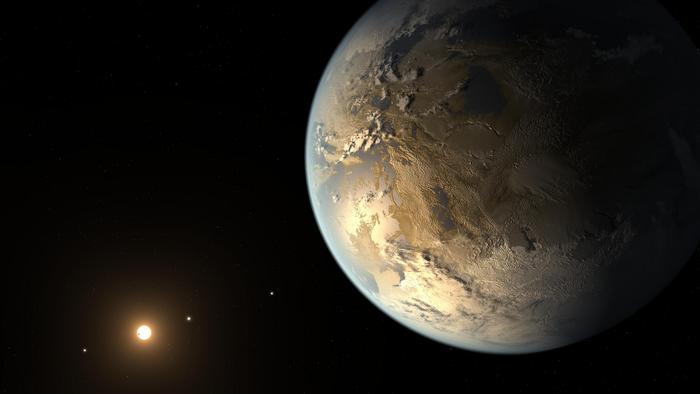When Searching for Life on Exoplanets, a Lack of Its Signs Is Only a Starting Point
Posted on Categories Discover Magazine

When searching for signs of life on planets outside our Solar System, sometimes nothing is almost as good as something. Even a lack of biosignatures on examined exoplanets can still tell us a lot about the probability of life on the billions of planets we haven’t checked out yet, according to a study in The Astronomical Journal.
The study employed a sophisticated statistical analysis to determine the minimum number of exoplanets that would need to be observed to generate useful answers about how many potentially inhabited planets are out there. They determined that finding no signs of life on 40 to 80 exoplanets would not, in fact, rule out that such life exists. Instead, such an answer would only whittle down the probability a bit.
Searching for Life on Exoplanets
It would mean that fewer than 10 percent to 20 percent of similar planets in the Milky Way potentially could support life. Extrapolating outward, that 10 percent, when applied to the entire Universe, still equates to about 10 billion potentially inhabited planets — so, it’s not nothing.
There is, however, a catch: uncertainty. Every observation contains a certain level of the unknown. Were things measured the right way? Did the researchers interpret the data correctly? Was there something the researchers overlooked?
Such questions are more than just philosophical, the authors argue. They could determine how many resources are dedicated to a particular area.
“It’s not just about how many planets we observe – it’s about asking the right questions and how confident we can be in seeing or not seeing what we’re searching for,” Daniel Angerhausen, a physicist at ETH Zurich and an author of the paper, said in a press release. “If we’re not careful and are overconfident in our abilities to identify life, even a large survey could lead to misleading results.”
Those questions will steer how missions such as the international Large Interferometer for Exoplanets (LIFE) mission led by ETH Zurich will be conducted. LIFE aims to analyze dozens of exoplanets that resemble Earth in terms of mass, radius, and temperature. The mission will seek signs of water and oxygen as well as other chemical components that indicate at least potential for life.
Read More: 6 Exoplanets in our Universe That Could Support Life Other Than Earth
Addressing Uncertainty for Upcoming Missions
As a result of the statistical analysis, researches should change the questions they ask on upcoming missions, according to the press release.
“To address sample uncertainty, for instance, the authors point out that specific and measurable questions such as, “Which fraction of rocky planets in a solar system’s habitable zone show clear signs of water vapor, oxygen, and methane?” are preferable to the far more ambiguous, “How many planets have life?”
Article Sources
Our writers at Discovermagazine.com use peer-reviewed studies and high-quality sources for our articles, and our editors review for scientific accuracy and editorial standards. Review the sources used below for this article:
Before joining Discover Magazine, Paul Smaglik spent over 20 years as a science journalist, specializing in U.S. life science policy and global scientific career issues. He began his career in newspapers, but switched to scientific magazines. His work has appeared in publications including Science News, Science, Nature, and Scientific American.